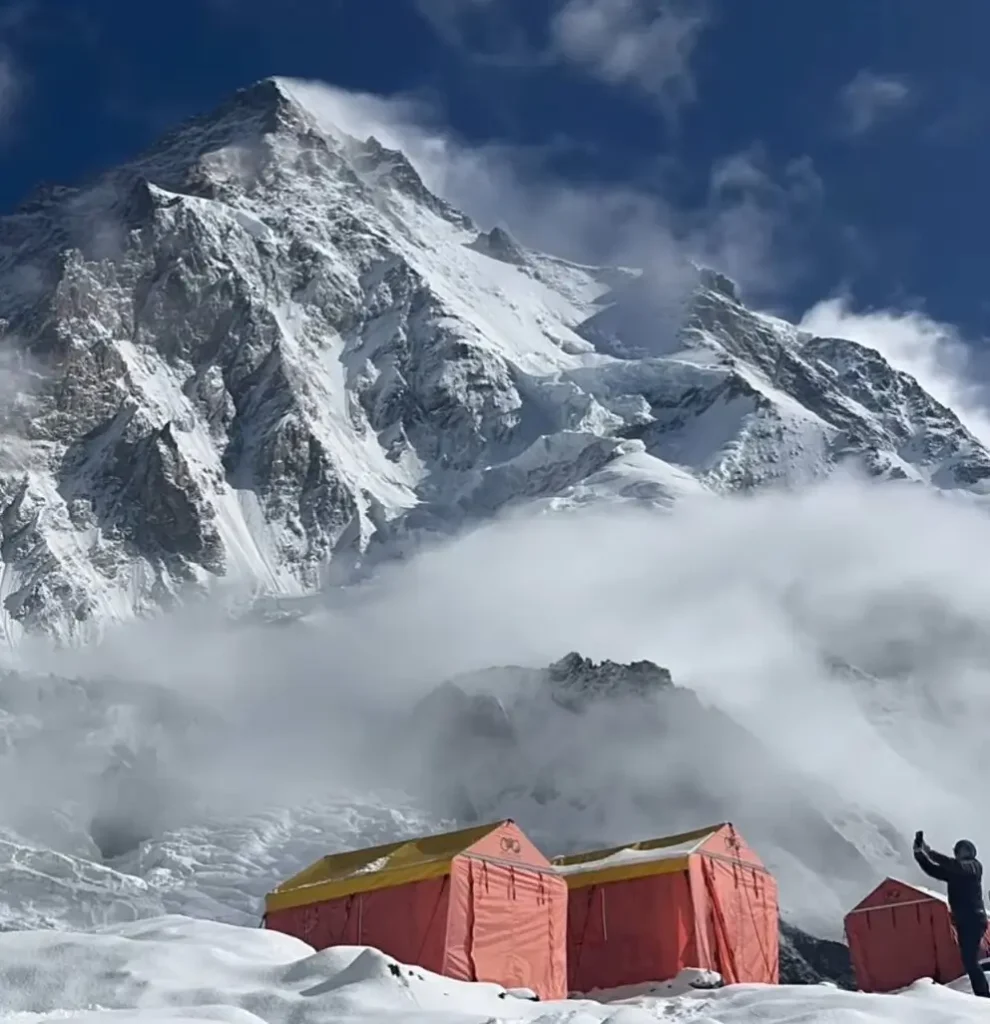Summer 2025: Triumph and Tragedy in the High Mountains
The summer climbing season of 2025 unfolded like a drama in three acts. From the storm-lashed giants of the Karakoram, to the deadly ridges of the Tian Shan, and finally to the polished granite of the Alps, climbers faced extremes of endurance, loss, and creativity.

Table of contents
Karakoram: The Narrowest of Windows
Karakoram: The Narrowest of Windows
In Pakistan’s Karakoram, the season began with anticipation but quickly turned tense. Snow and rockfall hammered the lower slopes, while above 7,000 meters, shifting winds kept climbers on edge. Every summit came only when the mountains allowed, and for most, the wait was long.
On Nanga Parbat, a brief window in early July became a rare chance. Among those who seized it was Germany’s David Göttler, finally standing on the summit after five failed attempts, climbing in pure Alpine style. Denis Urubko and Maria Cardell opened a new alpine-style route via the Diamir Face without supplemental oxygen, naming it Niezabudka, then descended safely. Australia’s Allie Pepper inched forward in her quest to complete all 14×8,000ers without oxygen, while Romania’s Horia Colibășanu added his eleventh no-O2 giant. For Nirmal Purja (Nims), the summit marked a symbolic milestone: his 50th 8,000er, a number unmatched in mountaineering history. Yet Nanga Parbat demanded its price – Czech climber Klára Kolouchová fell to her death, a sobering reminder that even “normal” seasons here are never gentle.
Further east on K2, weeks of frustration built toward a single opening in mid-August. Jetstream winds kept teams pinned until, suddenly, the Savage Mountain relented. Roughly 40 climbers topped out, among them Mingma G, Romanian Maria Alexandra Danila, and China’s Dilixiati Ailikuti, the youngest summiter this year. It was the first August summit push on K2 since 2011 – proof of how rare such chances are. But joy turned to grief as Guan Jing of China died on descent, and Pakistani HAP Iftikhar Hussain Sadpara was killed by rockfall earlier in the season. On August 12, the day after the main commercial push, French climber Serge Hardy stood alone on the summit of K2. Initially reported to have abandoned his attempt, Hardy instead pressed forward and made a remarkable solo ascent, turning to supplementary oxygen at the Bottleneck for the final push. His climb added a unique note to the season – proof that even amid large-scale guided expeditions, bold individual efforts still stand out on the Savage Mountain.
Other peaks told similar stories. On Broad Peak, avalanches and broken cooperation left only a handful of summits, while on Gasherbrum I and II, small groups slipped through in late July. A different kind of victory came on Ultar Sar, where a North American–South American–European trio finally completed the long-sought Southeast Pillar, christening their bold 3,100-meter line Shooting the Moon. But the Hushe Valley mourned German Olympic champion-turned-alpinist Laura Dahlmeier, killed by rockfall on Laila Peak at just 31.
Tian Shan: The Storms of Pobeda
If the Karakoram was unforgiving, the Tian Shan proved catastrophic. On Peak Pobeda (7,439m), one of the most demanding of the Snow Leopard peaks, climbers faced relentless storms and bitter cold. Among the few who reached the summit was veteran Russian Nikolai Totmyanin, only to die of a heart attack the next day. Iranian climbers Maryam Pilehvari and Hassan Mashhadioglu made the top but collapsed on descent, exhausted and exposed.
Perhaps the season’s most haunting story was that of Natalia Nagovitsyna, who broke both legs near 7,100 meters and was stranded for nearly two weeks in – 29°C. Attempts to reach her ended in tragedy when a rescue helicopter crashed, killing the crew. By the end of August, she too was gone. With at least five confirmed fatalities, Pobeda’s 2025 season entered the books as one of its deadliest ever.
Alps: Creativity Over Survival
While the high ranges tested survival, the Alps celebrated imagination. Here, climbers weren’t chasing altitude but possibility. In June, the Cassin Route on the Grandes Jorasses saw its first 2025 ascent, while in August, French duo Leo Billon and Enzo Oddo achieved the first full free ascent of the Lafaille Route on the Petit Dru, one of the hardest free climbs ever done in the Mont Blanc Massif.
Elsewhere, the Matterhorn gained a new 480-meter 7b line, Il Nodo Infinito, opened by Francois and Michelle Cazzanelli with Stefano Stradelli, while the Aiguille de la Brenva revealed Cenerentolo, another bold 7b alpine line with minimal bolting. These climbs may not grab global headlines like K2 or Pobeda, but they reflect the living spirit of alpinism: innovation, vision, and beauty on steep stone.
The Dual Face of Summer 2025
Looking back, summer 2025 was a season of extremes. On the 8,000ers, climbers snatched rare chances in fleeting weather windows, often at immense cost. In the Tian Shan, Pobeda delivered heartbreak after heartbreak. But in the Alps, the story was different – less about survival, more about redefining what’s possible. It was a season that reminded us why mountaineering captivates: not for the certainty of success, but for the fragile balance between triumph and tragedy, endurance and imagination, life and loss.

